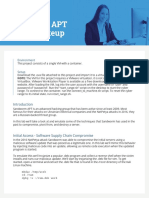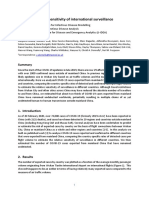0% found this document useful (0 votes)
425 views7 pages(HTB) Hackthebox Monitors Writeup
The document summarizes the steps taken to hack the HackTheBox machine called "Monitors" over multiple paragraphs. It involves running nmap scans to find ports 22, 80 open, exploiting an LFI vulnerability in the WordPress plugin to get credentials for the Cacti monitoring panel, using SQL injection to get a reverse shell, obtaining more credentials from a backup file to SSH as another user, exploiting a Tomcat vulnerability through Metasploit to get an initial shell, then compiling and loading a kernel module to achieve root privileges on the system.
Uploaded by
joan garcia garciaCopyright
© © All Rights Reserved
We take content rights seriously. If you suspect this is your content, claim it here.
Available Formats
Download as PDF, TXT or read online on Scribd
0% found this document useful (0 votes)
425 views7 pages(HTB) Hackthebox Monitors Writeup
The document summarizes the steps taken to hack the HackTheBox machine called "Monitors" over multiple paragraphs. It involves running nmap scans to find ports 22, 80 open, exploiting an LFI vulnerability in the WordPress plugin to get credentials for the Cacti monitoring panel, using SQL injection to get a reverse shell, obtaining more credentials from a backup file to SSH as another user, exploiting a Tomcat vulnerability through Metasploit to get an initial shell, then compiling and loading a kernel module to achieve root privileges on the system.
Uploaded by
joan garcia garciaCopyright
© © All Rights Reserved
We take content rights seriously. If you suspect this is your content, claim it here.
Available Formats
Download as PDF, TXT or read online on Scribd
/ 7






























































































